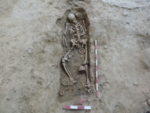 Lisbon is a city with thousands of years of human habitation behind it, so whenever there is construction in the heart of that involves foundation or basement work, the site must be archaeologically surveyed first. So in 2016 when one its most famous restaurants, Solar dos Presuntos, a culinary icon of the city renown for its traditional Portuguese fare, decided to expand its kitchen and build a school attached to the restaurant, archaeologists got first crack at the site. Contractor archaeology company Neoepica was hired to work on this project, beginning with a preliminary study, diagnostic and test pits.
Lisbon is a city with thousands of years of human habitation behind it, so whenever there is construction in the heart of that involves foundation or basement work, the site must be archaeologically surveyed first. So in 2016 when one its most famous restaurants, Solar dos Presuntos, a culinary icon of the city renown for its traditional Portuguese fare, decided to expand its kitchen and build a school attached to the restaurant, archaeologists got first crack at the site. Contractor archaeology company Neoepica was hired to work on this project, beginning with a preliminary study, diagnostic and test pits.
Lisbon has a rich history going back to the Neolithic and there were Phoenicians living in what would become Lisbon since at least 1200 B.C. Rome established a foothill in what they called Olissipo after the defeat of Carthage by Scipio Africanus in 206 B.C. The city was an important and prosperous trade center, thanks to its location on the Atlantic Ocean and Tagus river. Lisbon’s main square, the Praça da Figueira, is located over a major Roman cemetery in use from the 1st through the 4th century.
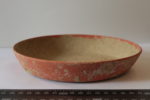 With all this density of history in the city center, archaeologists expected to make some discoveries where the restaurant was planning its addition, but because later construction often makes mincemeat of ancient remains, they weren’t expecting to hit a motherlode of Roman material. First they discovered 16th and 15th century artifacts, primarily pottery — dishes, cups, vessels — in very good condition. Then the bones began to appear.
With all this density of history in the city center, archaeologists expected to make some discoveries where the restaurant was planning its addition, but because later construction often makes mincemeat of ancient remains, they weren’t expecting to hit a motherlode of Roman material. First they discovered 16th and 15th century artifacts, primarily pottery — dishes, cups, vessels — in very good condition. Then the bones began to appear.
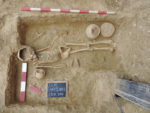 Twenty feet under the surface, the team unearthed 28 skeletons from inhumation burials and urns containing the ashes of multiple individuals. Altogether, the remains of 60 people were found in the cemetery. Several of the inhumations included grave goods and funerary offerings left at the time of burial. These include typical Roman offerings like lamps, which illuminated the way to the underworld, and coins to secure the deceased would have the wherewithal to pay their way. There’s also a highly unusual object that is still in the process of being studied and evaluated, but appears to be a doctor’s case containing surgical instruments.
Twenty feet under the surface, the team unearthed 28 skeletons from inhumation burials and urns containing the ashes of multiple individuals. Altogether, the remains of 60 people were found in the cemetery. Several of the inhumations included grave goods and funerary offerings left at the time of burial. These include typical Roman offerings like lamps, which illuminated the way to the underworld, and coins to secure the deceased would have the wherewithal to pay their way. There’s also a highly unusual object that is still in the process of being studied and evaluated, but appears to be a doctor’s case containing surgical instruments.
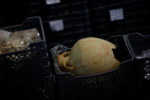 The finds are mostly in excellent condition. Neoepica archaeologist Paulo Rebelo described it as “possibly the best-preserved Roman necropolis found in recent times.” The remains have not been radiocarbon dated yet, but based on the objects found, the cemetery dates to the 2nd or 3rd century.
The finds are mostly in excellent condition. Neoepica archaeologist Paulo Rebelo described it as “possibly the best-preserved Roman necropolis found in recent times.” The remains have not been radiocarbon dated yet, but based on the objects found, the cemetery dates to the 2nd or 3rd century.
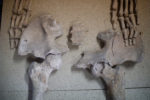 The borders of the cemetery have not been pinpointed by this excavation. The team dug a little further afield and found additional traces of the necropolis in several directions. The archaeological material in the planned construction area has been salvaged, so the expansion of the restaurant will now be allowed to proceed. The finds have been transferred to Neoepica’s research laboratory. When the study is complete, the remains will be given to the city council which will determine where they will go on display.
The borders of the cemetery have not been pinpointed by this excavation. The team dug a little further afield and found additional traces of the necropolis in several directions. The archaeological material in the planned construction area has been salvaged, so the expansion of the restaurant will now be allowed to proceed. The finds have been transferred to Neoepica’s research laboratory. When the study is complete, the remains will be given to the city council which will determine where they will go on display.